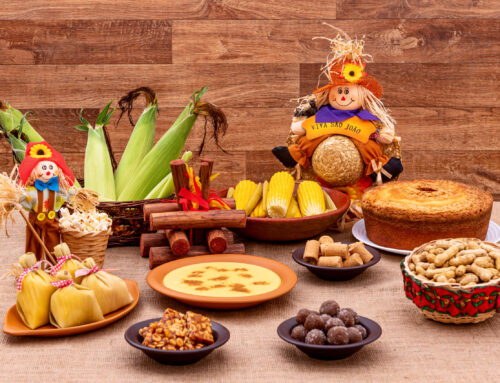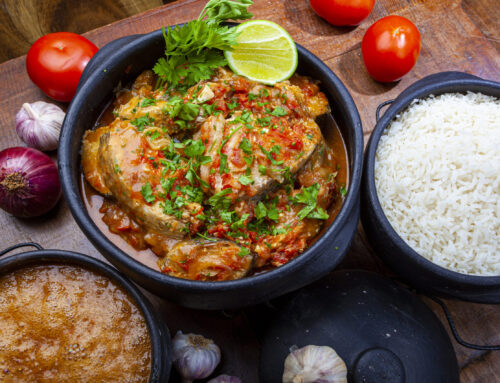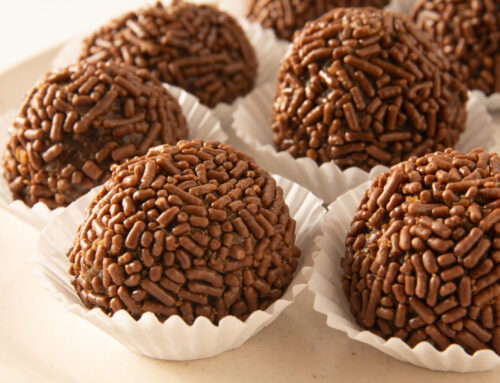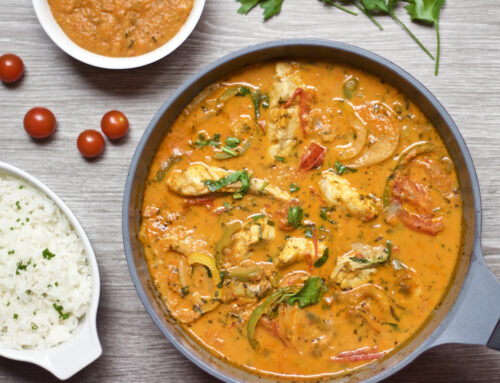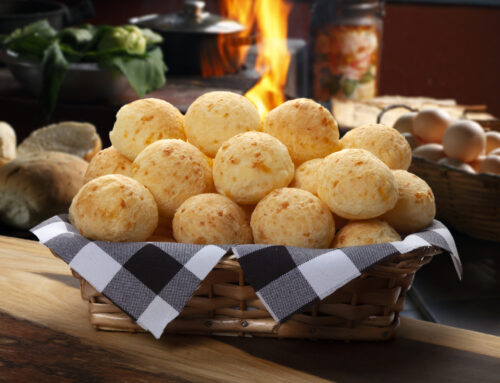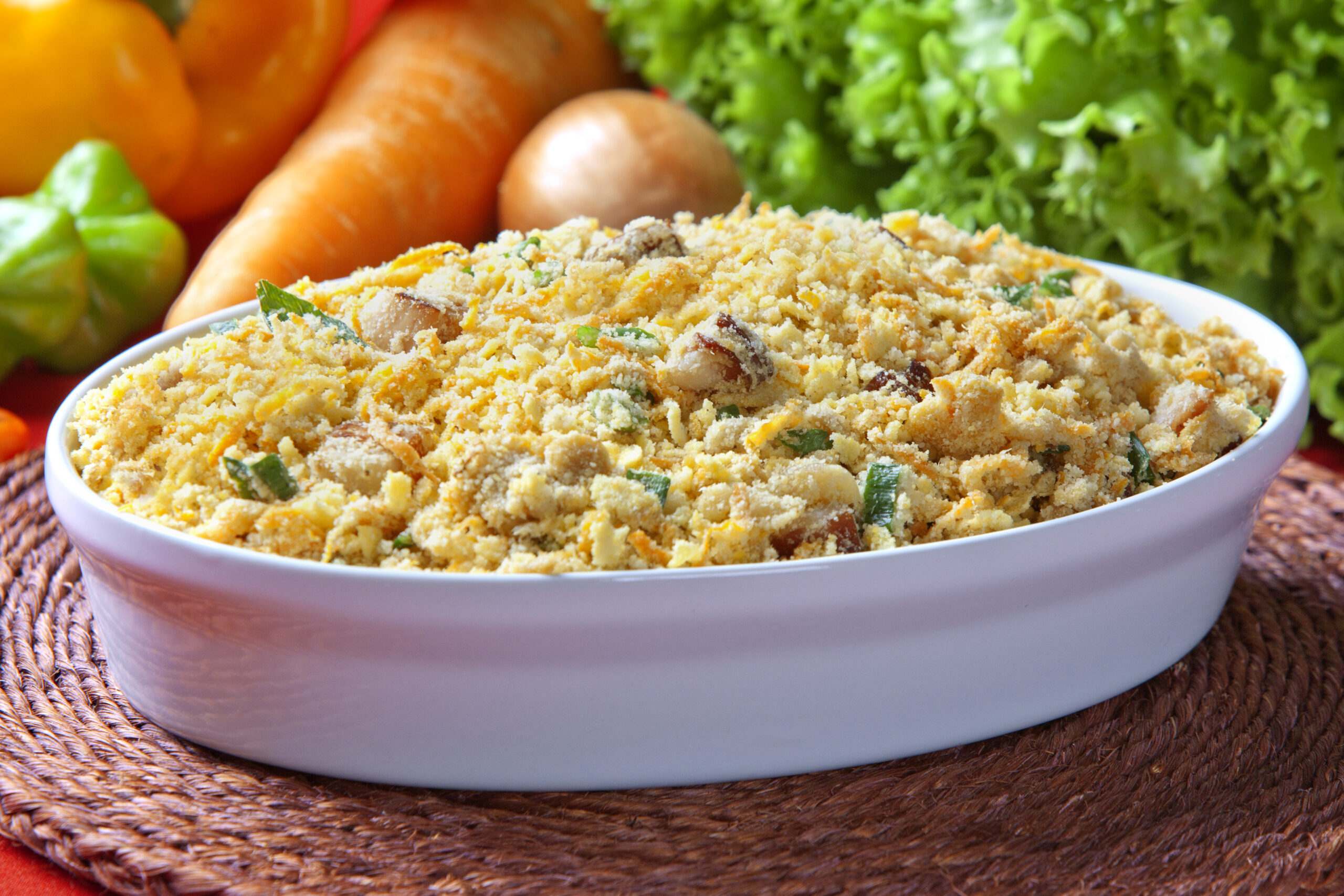
Table of Contents
Brazilian cuisine is renowned for its diversity and richness of flavors, resulting from the fusion of various cultural influences over the centuries. Among the typical dishes that are part of our daily life, farofa stands out as a versatile and beloved side dish. This article explores the history, regional variations, and popularity of farofa, revealing how this simple dish has captured the hearts of Brazilians.
Origin and History of Farofa
Farofa has its roots in the diet of indigenous people, who used cassava flour as the basis for many dishes. The Brazilian indigenous peoples consumed the flour plain or mixed with water, and over time, this practice was incorporated and transformed by Portuguese colonizers and enslaved Africans, who added new ingredients and preparation techniques. The word “farofa” derives from the African term “falofa,” meaning toasted flour. The combination of these different cultural elements gave rise to the farofa we know today: a dish based on toasted cassava flour, often enriched with a variety of ingredients such as onions, garlic, eggs, bacon, sausage, herbs, and even fruits.
Regional Variations
Farofa is a perfect example of the gastronomic diversity of Brazil, with variations that reflect the peculiarities of each region. In the Northeast, for example, farofa de dendê is very popular, prepared with dendê oil, typical of Bahian cuisine. In the Southeast, especially in Rio de Janeiro, farofa can include eggs and bananas, creating an interesting contrast between savory and sweet. In the Midwest, farofa de pequi is a delicacy, highlighting the typical fruit of the Brazilian cerrado. In the South, farofa gains a special touch with the addition of pine nuts, showcasing local ingredients. These regional variations show how adaptable farofa is and how each region of Brazil can put its own mark on this traditional dish.
Versatility and Popularity
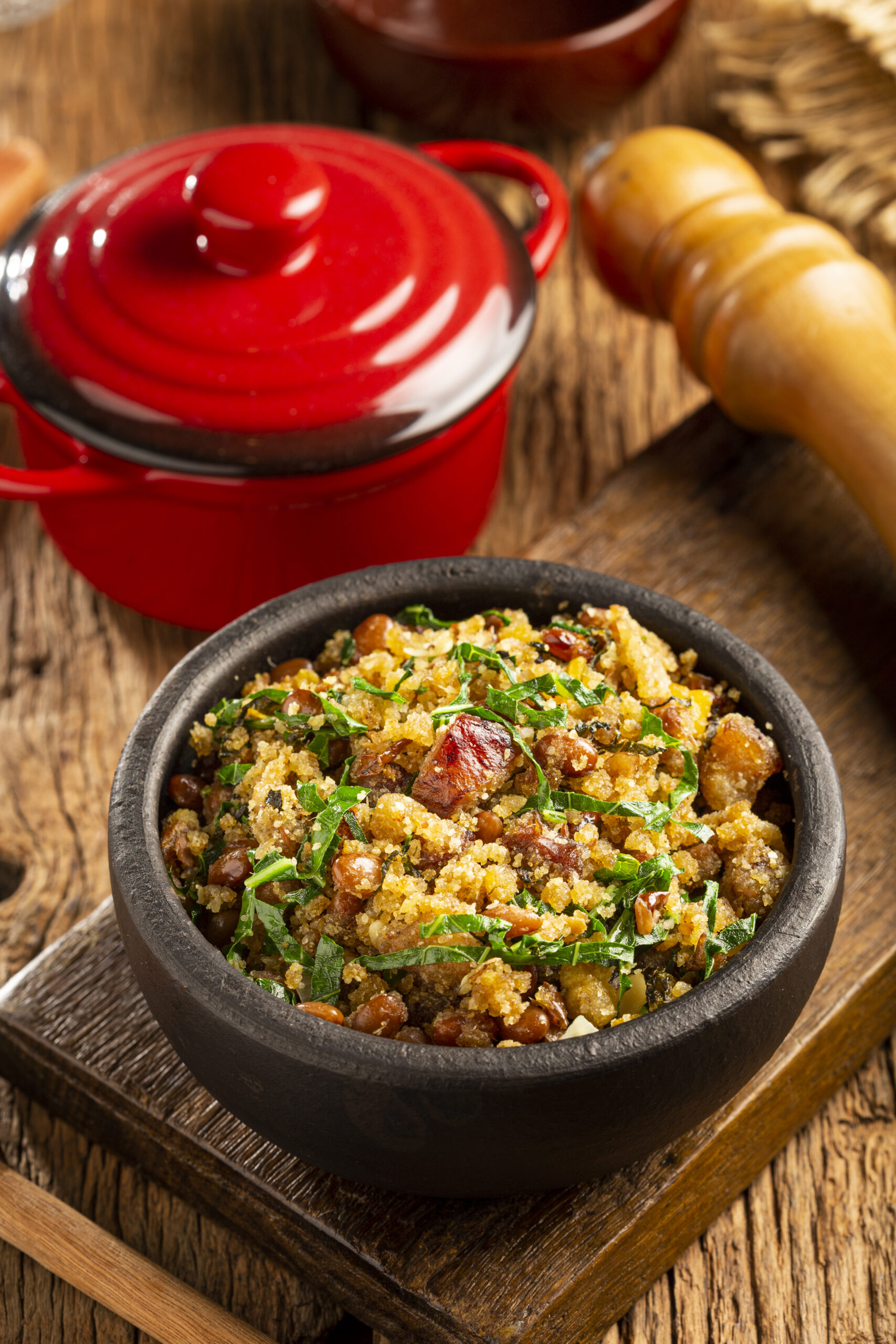
Farofa is a side dish that can be found on any occasion, from Sunday barbecues to festive celebrations like Christmas and Easter. Its versatility allows it to be combined with a wide range of main dishes, such as roast meat, fish, chicken, feijoada, and even salads. In addition to its delicious taste, farofa is valued for its simplicity and ease of preparation. With few ingredients and a quick preparation time, it has become an indispensable item in Brazilian cuisine. This practicality, combined with the ability to absorb the flavors and textures of other ingredients, has made farofa a true staple in national gastronomy.
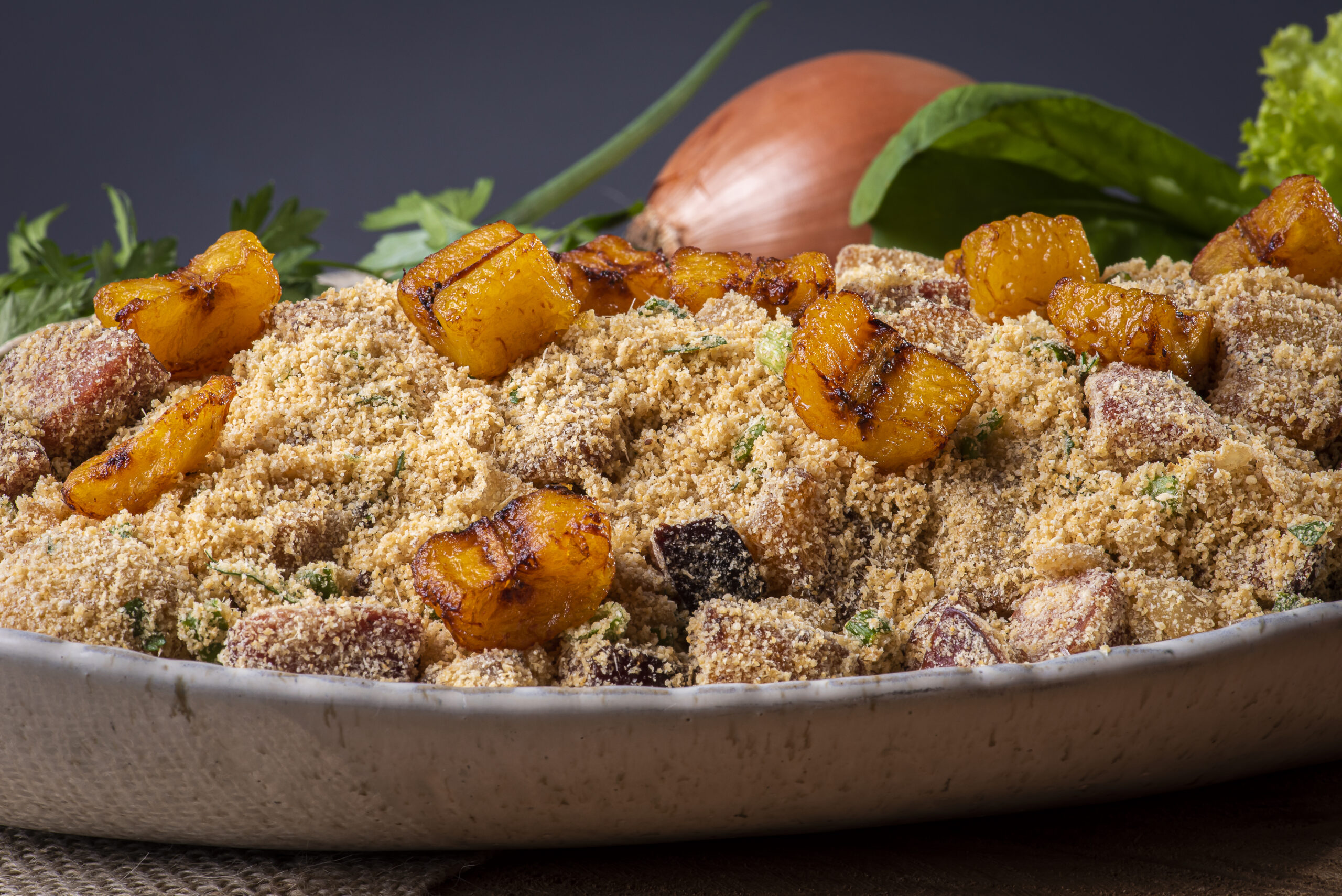
Farofa Around the World
In recent years, Brazilian cuisine has gained international prominence, and farofa has not been left out of this trend. Brazilian restaurants around the world serve farofa as part of their menus, introducing this unique side dish to new audiences. Farofa is often presented as an exotic curiosity but quickly wins over foreign palates with its comforting and versatile flavor.
Basic Farofa Recipe
For those who wish to try farofa at home, here is a basic recipe:
Ingredients:
– 2 cups cassava flour
– 4 tablespoons butter or oil
– 1 medium onion, chopped
– 2 cloves garlic, chopped
– Salt and pepper to taste
– Optional: eggs, bacon, sausage, herbs, dried fruits
Preparation Method:
- In a large skillet, melt the butter or heat the oil.
- Add the onion and garlic, sautéing until golden.
- Add the optional ingredients of your choice and cook until they reach the desired consistency.
- Add the cassava flour, stirring well to absorb the flavors.
- Season with salt and pepper to taste.
- Continue stirring until the farofa is lightly toasted and crispy.
- Serve hot as a side dish.
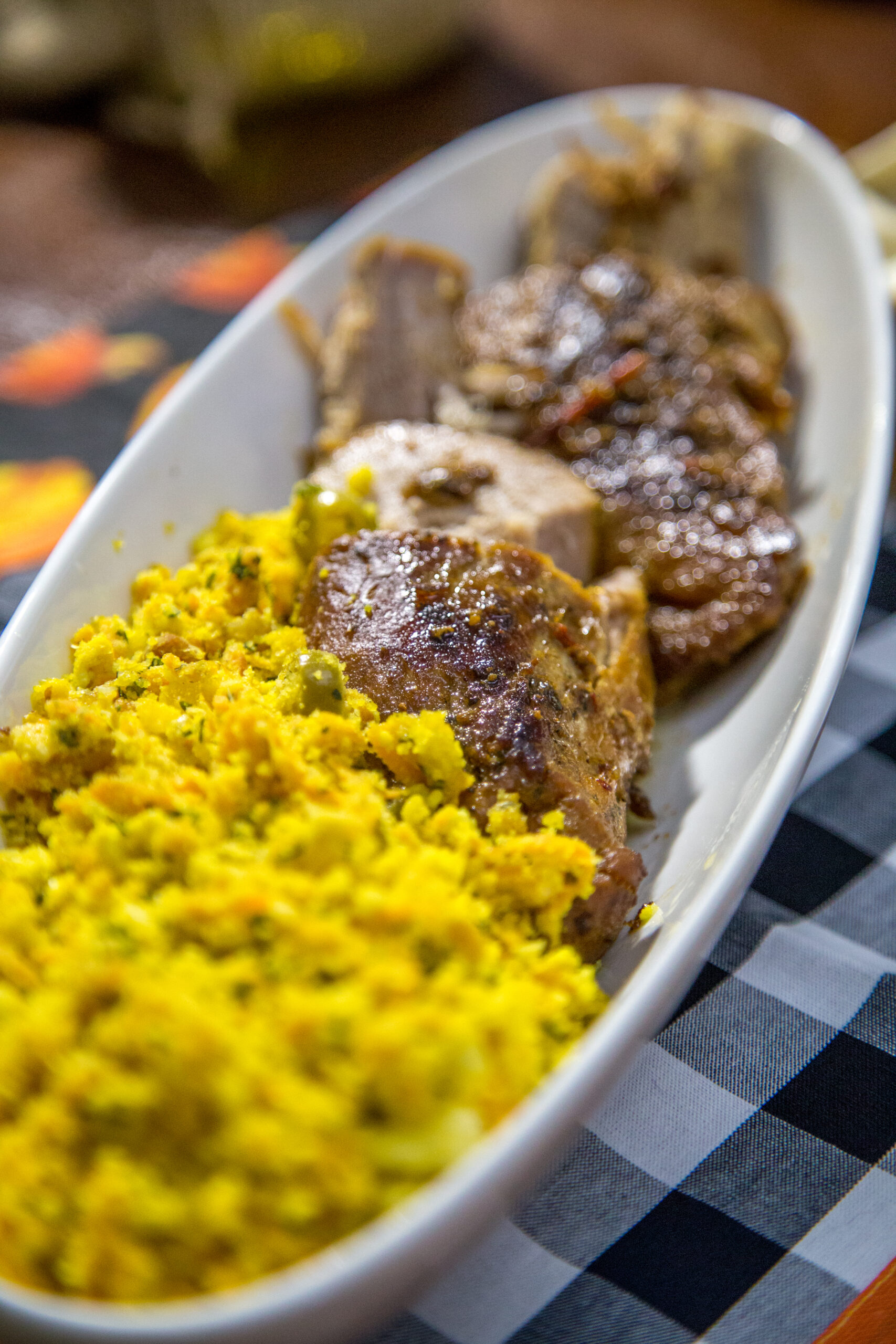
Conclusion
Farofa is more than just a simple side dish; it is a symbol of Brazil’s cultural and gastronomic richness. With its multiple variations and ease of preparation, farofa has conquered the Brazilian palate and is gaining ground on the international scene. If you haven’t yet tried this delight, don’t miss the opportunity to add an authentic Brazilian touch to your next meal.

